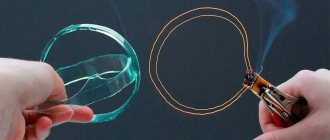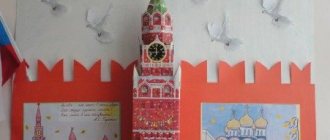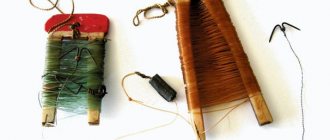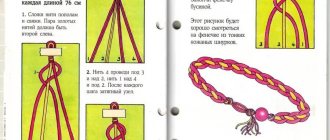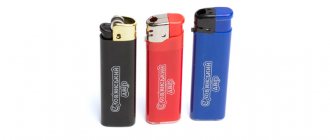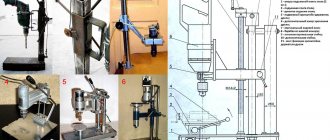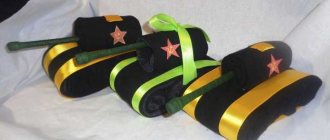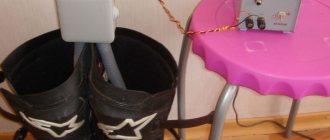People began to invent devices for ironing clothes a long time ago, long before the birth of Christ. Rus' also had its own life hacks. Our ancestors ironed fabric with frying pans heated over hot coals, or with a rubel - a product made from a corrugated wooden board, which was used to roll out wrung-out laundry wrapped on a rolling pin.
And the first documentary mention of the iron in Rus' is dated February 10, 1636. Exactly 385 years ago, in the book of expenses of the royal court of Mikhail Romanov it was written: “ The blacksmith Ivashka Trofimov was given 5 altyns, and for that money he built an iron iron in the Tsarina’s chamber.” Thus, February 10 in our country can rightfully be considered the birthday of the iron.
And this subject is not as simple as it seems. After all, it can be used not only for its intended purpose. We talk about the most unusual ways to use an iron in the household.
Secure the edges of the linoleum
An iron is useful in repairs when you need to secure the edges of linoleum so that they do not curl upward. Take a piece of foil, place it on the problem area and iron it. When the linoleum moves away from the floor surface, it can be re-glued.
After applying the glue, the iron can be used as a weight to press this section of linoleum to the floor. It will also perfectly replace a smoothing roller if you are laying fresh linoleum. Just don’t need to heat up the iron.
Article on the topic
Easy and not boring. What devices will make the ironing process more enjoyable?
Making an anvil
You can use an old iron to make your own homemade anvil. To do this you will need:
- board made of any wood material 40 mm thick;
- iron sole;
- 2 M8 bolts;
- plane.
What should be done:
- Mark all sides of the iron on the board.
- Cut out the resulting sketch using a hand saw or electric jigsaw.
- Check the board for serifs. If there are a lot of them or they are in small quantities, plan them with a hand or electric planer so that the board has a smooth and even surface.
- Route 2 holes into the board for the bolts and then drill the holes. Mark the maximum penetration of the drill and cover this place on it with electrical tape.
- Make a template for the future entrance to the board. Do it with the same drill, then secure with a clamp.
- The socket holes should be sized to easily accommodate a socket wrench.
- Secure all bolts.
- To avoid vibration during future work, staple sheet felt under the board. Having previously measured and cut it to the size of the board. After fastening, beat the staples with a hammer to fix them more tightly.
Your homemade anvil is ready!
Riddles and poems about the iron in pictures and tasks for children.
Now let’s take a closer look at our home iron with the kids. And riddles will help us with this. They will help develop children's imaginative thinking, as they contain very poetic, bright and expressive comparisons and metaphors.
Riddles about the iron: riddle 1
Assignments for the riddle: What kind of river is in this riddle? (sheet, clothes being ironed). Why is the iron compared to a steel boat in the riddle? How is he similar to her? (the iron also moves smoothly, as if floating along a river; irons used to be made of metal).
“It floats - the wave disappears.” What wave will disappear when the iron passes through the fabric? (wrinkles on clothes will disappear, they will become as smooth as a river).
“The river is linen, the boat is steel. If it floats by, the wave will disappear.”
Iron riddles: riddle 2
Assignments for the riddle: Why is the iron compared to a steamboat in the riddle? Which river does the iron float on? What kind of surface is behind it? When is the sea smooth? Why is an ironed sheet compared to the surface of the sea in a riddle - how are they similar? (They are smooth, no wrinkles, no folds, no waves)
“In a linen country A steamboat floats along a sheet river, Now back, now forward, And behind it there is such a smooth surface, Not a wrinkle to be seen.”
Teach your children the basics of iron safety.
Iron riddles: riddle 3
Assignments to the riddle: Why does this riddle say that the iron cannot be stopped - and it must always go back and forth: “If you stop, woe! The sea will be perforated! What happens if you forget the iron and leave it on your clothes? (The clothes will burn, there will be a hole in this place, there may be a fire)
“Now back, now forward The steamer walks and wanders. If you stop, woe! The sea will be perforated!
Iron riddles: riddle 4
Assignments for the riddle: Why does this riddle say about the iron like this: “if you touch it, it bites.” How does an iron bite? Why doesn't your mom let you touch the hot iron? Is it possible to touch a hot iron when adults are not in the room, because they won’t see (the question is provocative and asked specifically - many children say that “it’s possible, only a little”


